Higher classification Calidrid | Phylum Chordata Family Scolopacidae Scientific name Calidris pygmaea Rank Species | |
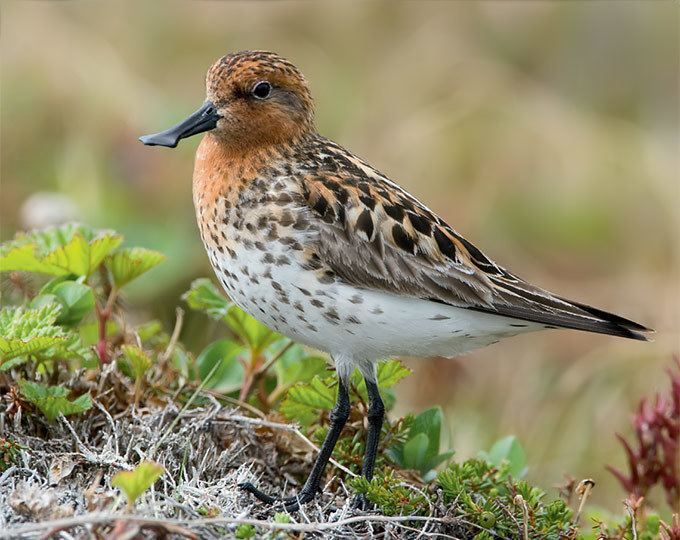 | ||
Similar Bird, Sandpiper, Nordmann's greenshank, Great knot, Red‑necked stint | ||
Spoon billed sandpiper hatch
The spoon-billed sandpiper (Calidris pygmaea) is a small wader which breeds in north-eastern Russia and winters in Southeast Asia.
Contents
- Spoon billed sandpiper hatch
- Spoon billed sandpiper courtship
- Taxonomy and systematics
- Description
- Distribution and habitat
- Feeding
- Status
- References
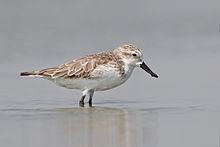
Spoon billed sandpiper courtship
Taxonomy and systematics
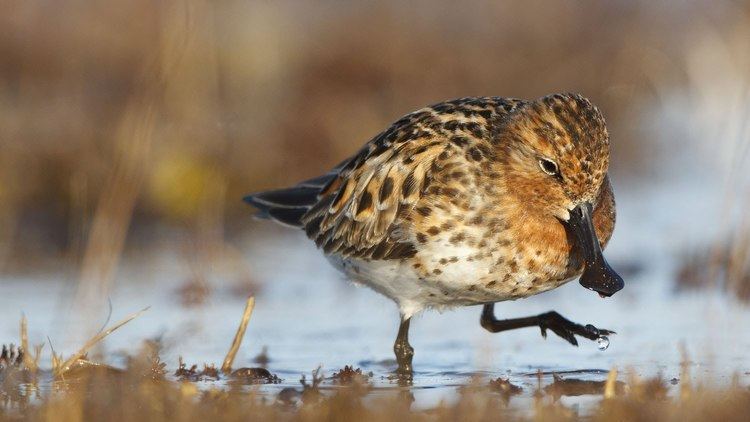
This species was first described by Linnaeus in his Systema Naturae in 1758 as Platalea pygmea. It was later moved to Eurynorhynchus by Sven Nilsson in 1821. It is now classified under the calidrid sandpipers.
Description
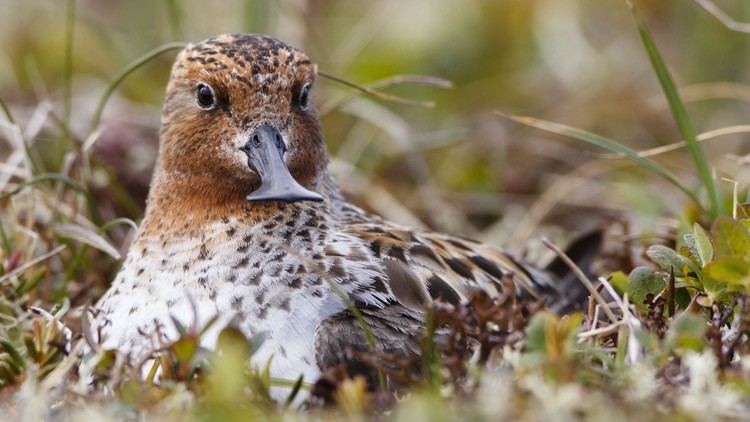
The most distinctive feature of this species is its spatulate bill. The breeding adult bird is 14–16 cm in length, and has a red-brown head, neck and breast with dark brown streaks. It has blackish upperparts with buff and pale rufous fringing. Non-breeding adults lack the reddish colouration, but have pale brownish-grey upperparts with whitish fringing to the wing-coverts. The underparts are white and the legs are black.
The measurements are; wing 98–106 mm, bill 19–24 mm, bill tip breadth 10–12 mm, tarsus 19–22 mm and tail 37–39 mm.
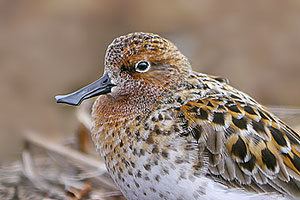
The contact calls of the spoon-billed sandpiper include a quiet preep or a shrill wheer. The song, given during display, is an intermittent buzzing and descending trill preer-prr-prr. The display flight of the male includes brief hovers, circling and rapid diving while singing.
Distribution and habitat
The spoon-billed sandpiper's breeding habitat is sea coasts and adjacent hinterland on the Chukchi Peninsula and southwards along the isthmus of the Kamchatka peninsula It migrates down the Pacific coast through Japan, North Korea, South Korea and China, to its main wintering grounds in South and South-East Asia, where it has been recorded from India, Bangladesh, Sri Lanka, Burma, Thailand, Vietnam, the Philippines, Peninsular Malaysia and Singapore.
Feeding
Its feeding style consists of a side-to-side movement of the bill as the bird walks forward with its head down. This species nests in June–July on coastal areas in the tundra, choosing locations with grass close to freshwater pools.
Status
This bird is critically endangered, with a current population of fewer than 2500 – probably fewer than 1000 – mature individuals. The main threats to its survival are habitat loss on its breeding grounds and loss of tidal flats through its migratory and wintering range. The important staging area at Saemangeum, South Korea, has already been partially reclaimed, and the remaining wetlands are under serious threat of reclamation in the near future. Long-term remote sensing studies have shown that up to 65% of key spoon-billed sandpiper habitat in China, South Korea and North Korea has been destroyed by reclamation. A 2010 study suggests that hunting in Burma by traditional bird trappers is a primary cause of the decline.
Protected areas in its staging and wintering areas include Yancheng in China, Mai Po Marshes in Hong Kong and Point Calimere and Chilka lake in India,.
Formerly classified as an Endangered species by the IUCN, recent research shows that its numbers are decreasing more and more rapidly and that it is on the verge of extinction. It is consequently reclassified to Critically Endangered status in 2008. The population was estimated at only 120–200 pairs in 2009–2010, perhaps indicating an 88% decline since 2002 equating to an annual rate of decline of 26%. Draining of the Saemangeum estuary in South Korea removed an important migration staging point, and hunting on the important wintering grounds in Burma has emerged as a serious threat. This species may become extinct in 10–20 years.
In November 2011, thirteen spoon-billed sandpipers arrived at the Wildfowl and Wetlands Trust (WWT) reserve in Slimbridge, Gloucestershire to start a breeding program. The birds hatched from eggs collected in north-eastern Russian tundra earlier and spent 60 days in Moscow Zoo in quarantine in preparation for the 8,000 km journey. Artificial incubation and captive rearing, termed headstarting, may increase survival rates from less than 25% to over 75%, and the removal of eggs may also lead to a second clutch reared by the parents. In 2013, conservationists hatched twenty chicks in Chukotka.
